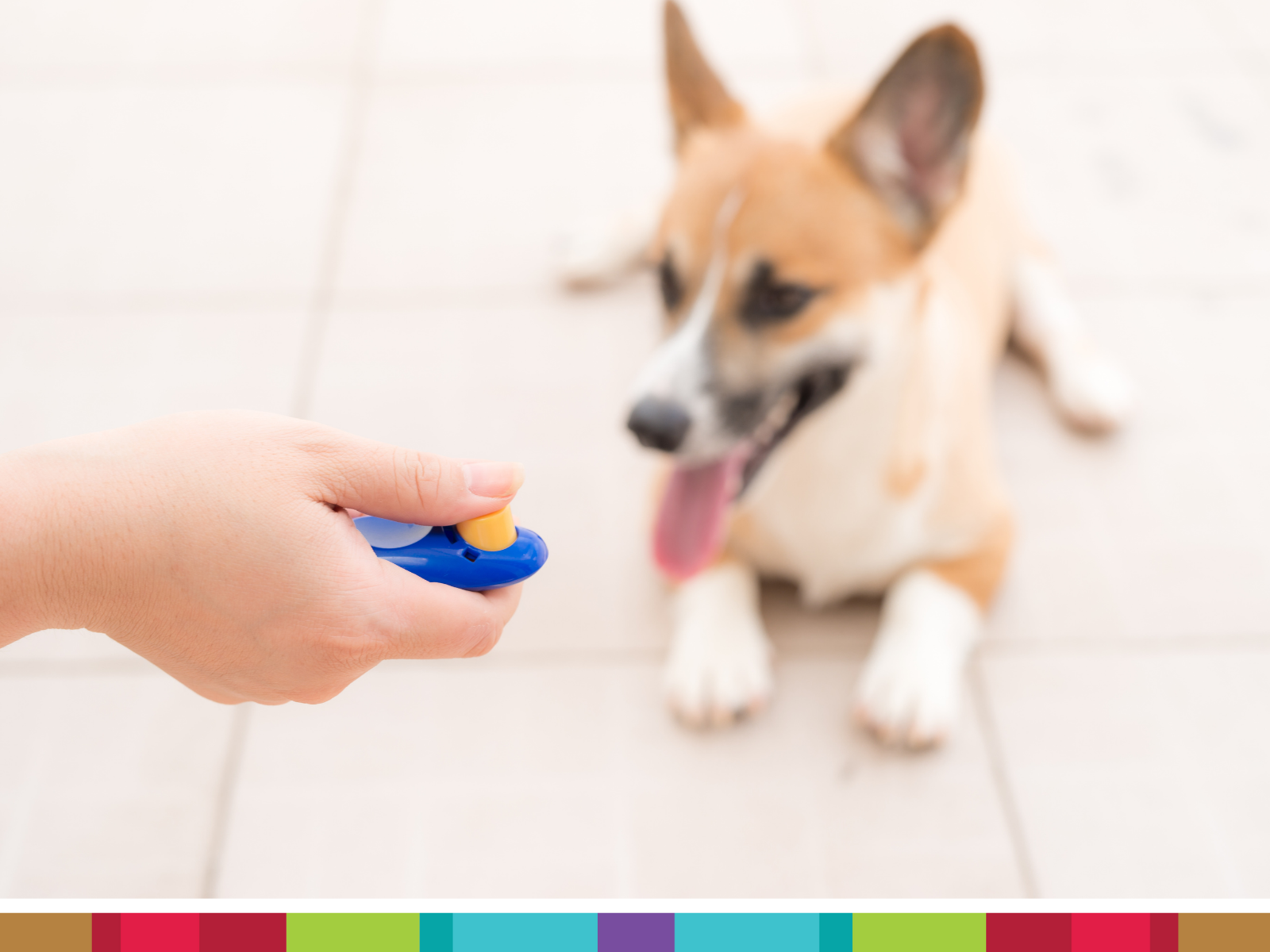November 9th, 2020
An Introduction To Clicker Training
Clicker training is an easy and effective way to train your pet so we wanted to share some helpful tips to help you get started.
A clicker is a wonderful tool used to train all types of animals! Used in training basic obedience, tricks, and behavioural modification. The clicker creates a sharp sound that marks the precise moment when your dog does something correctly. Because the sound of the clicker is so distinct, it makes it easy for a dog to recognize exactly what they did right. The clicker sound replaces words like, “good dog!”
If a dog is startled by the clicker sound, you can use a softer clicker or use a verbal marker, such as saying the word “yes.” For deaf dogs, you can use a hand signal or flashlight.
Loading the Clicker
The clicker works because it is paired with food. The clicker itself is a neutral object until the dog learns (with repetition) that the clicker sound is quickly followed by a yummy treat! This is called classical conditioning. When the dog hears the click, they know food is coming!
To get your dog to understand what the click means, take a handful of treats or kibble. Click the clicker (avoid clicking next to your dog’s ears) and drop a treat for your dog.
Make sure the click comes before the food, and not after! Repeat this until you’ve finished the handful of treats or kibble. You’ll know that your dog has developed an understanding when you click and your dog looks towards you, anticipating a food reward.
Using the Clicker
Now that your clicker is “loaded” you can begin to use it in training. Your training sequence should be:
Verbal or Hand Cue –> Behaviour –> Click –> Food Reward
This sequence is an example of operant conditioning, where positive reinforcement (i.e. a treat) follows the desired behaviour (i.e. sitting). Use can use a clicker to teach new behaviours or reinforce learned behaviours.
Once your dog responds promptly to your verbal and/or hand cue, you can begin to phase out the clicker. However, you still need to reinforce your dog with treats! Your dog will lose motivation to perform a cue if they are never rewarded.
If you are using a clicker as part of a behaviour modification program, check with your trainer to see how long you should use the clicker for.
Practice Your Timing
To refine your timing, practice using the clicker without your dog. For example, have a friend bounce a tennis ball and try to click when the ball hits the floor. Your friend can understand a miss-click, but your dog cannot! Try to finesse your timing before using the clicker with your dog.
Using a Verbal Marker
In some cases, training certain behaviours requires you to hold a leash and a treat simultaneously, so it might be tricky to also hold a clicker. Therefore, you can also train a verbal marker.
Instead of click = reward, replace the click with a short verbal cue, such as “yes!” In this case, yes = a treat is coming! Use the same verbal marker every time and say the word in the same tone. Note: this is why using the clicker is advantageous, as it provides a clear, consistent sounding marker.
Don’t Misuse the Clicker
The clicker should not be used to capture your dog’s attention. The click should always follow the correct behaviour. Clicking to gain your dog’s attention will confuse your dog and it will lose meaning over time.
Have Fun!
Clicker training is a fun activity to engage your dog! It’s an affordable and easy-to-use tool for anyone to incorporate in their training. It helps reduce frustration and improve training efficacy, as your dog can easily identify the clicker sound. You can download a printable PDF of this guide by clicking here.
Did You Know?
The Edmonton Humane Society offers a variety of training classes to help your dog become a model canine citizen, such as Basic Obedience and Intermediate Obedience. You can also ask us behaviour questions by emailing:
Happy Training!
For more resources and advice on how to cultivate good interactions with your companion animals, check out our Behavioural Resources Page and for fun ways to connect with your pets at home, check out our Humane Education at Home page make a treat your pet is sure to love.
Learn How to Make a Tug-Toy!

